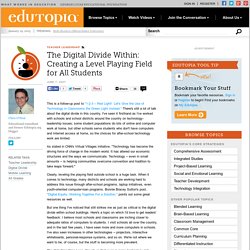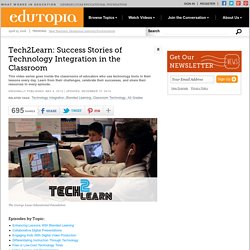

Bridget
UAS student
VoiceThread Tutorial.
Threats. Concept mapping. Personal devices in the classroom. Cloud Computing for Education. Cloud computing. Step 1 – Create A Class Blog. The next Student Blogging Challenge starts in March September, 2010 and this time we’ve decided there are tasks that need to be done BEFORE your class actually takes part in the challenge.

So we’ve designed a series of nine steps, with how-to info, to help you with your class blogging. Our first step is to create a class blog. Why Have A Class Blog A class blog is always a good starting point if you want to blog with your students. It gives you to time to increase your skills while gradually introducing your students to blogging and educating them on appropriate online behaviour. Start initially with you being responsible for writing posts, and the students responding in comments.
Ultimately even if each student has their own blog it is always a good idea to have a class blog. Blogging isn’t just about writing posts; it’s about sharing your learning and reflecting on what you have learnt. Important parts of the blogging process include encouraging students to: Username and Display Name Blog URL.
The Digital Divide Within: Creating a Level Playing Field for All Students. This is a follow-up post to "1-2-3 -- Red Light!

: Let's Give the Use of Technology in Classrooms the Green Light Instead. " There's still a lot of talk about the digital divide in this country. I've seen it firsthand as I've worked with schools and school districts around the country on technology-leadership issues; some student populations do lots of online and computer work at home, but other schools serve students who don't have computers and Internet access at home, so the choices for after-school technology work are limited. As stated in CNN's Virtual Villages initiative, "Technology has become the driving force of change in the modern world. It has altered our economic structures and the ways we communicate. Clearly, leveling the playing field outside school is a huge task. But one thing I've noticed that still strikes me as just as critical is the digital divide within school buildings. Some kids are getting a double whammy -- no technology at home and little at school.
Blended Learning: Making it Work in Your Classroom. Kristin: I can say that the things I've been doing the last two years have really made a difference, because my kids have scored the highest in the State on the standardized tests.

So what we're doing here is working, and it's helping them be successful. Julie: We define Blended Learning as the combination of digital content and activity with face-to-face content and activity. It sounds easy to Blend, but it really, it looks very different in every classroom. So if a teacher is using something that works really well in a face-to-face situation, they should continue to do that because it works well. If they can find something else that works better, is more efficient or more effective that's digital, then that would be implemented. Kristin: What I have online could be completely different than what the biology teacher has online, or what the physical education teacher has online. Mickey: Okay, go ahead get the laptops. There are three activities. Student: C. Mickey: C.
Innovative Practice: 5 Strategies for the Early Learning Classroom. A marble rolls down a ramp, and children cheer as it reaches the target they have adjusted numerous times.

After a small-group reading of Frog and Toad, children gather in a community of inquiry to discuss the nature of being scared and brave at the same time. In an adjacent area, two children complete their construction of treasure chests. They begin classifying rocks as gems or geodes, sorting them into the compartments of their wooden creations. A child preserves flowers using waxed paper and heavy books in the science center. These are activities occurring in a project- and play-based early learning classroom, where children are exploring the concepts of living and non-living things. I suggest five strategies that can be implemented in early learning classrooms and beyond, to support children's long-term success with rigorous learning standards. 1. Tech2Learn: Success Stories of Technology Integration in the Classroom. Facebook Edutopia on Facebook Twitter Edutopia on Twitter Google+ Pinterest Edutopia on Pinterest WHAT WORKS IN EDUCATION The George Lucas Educational Foundation.
